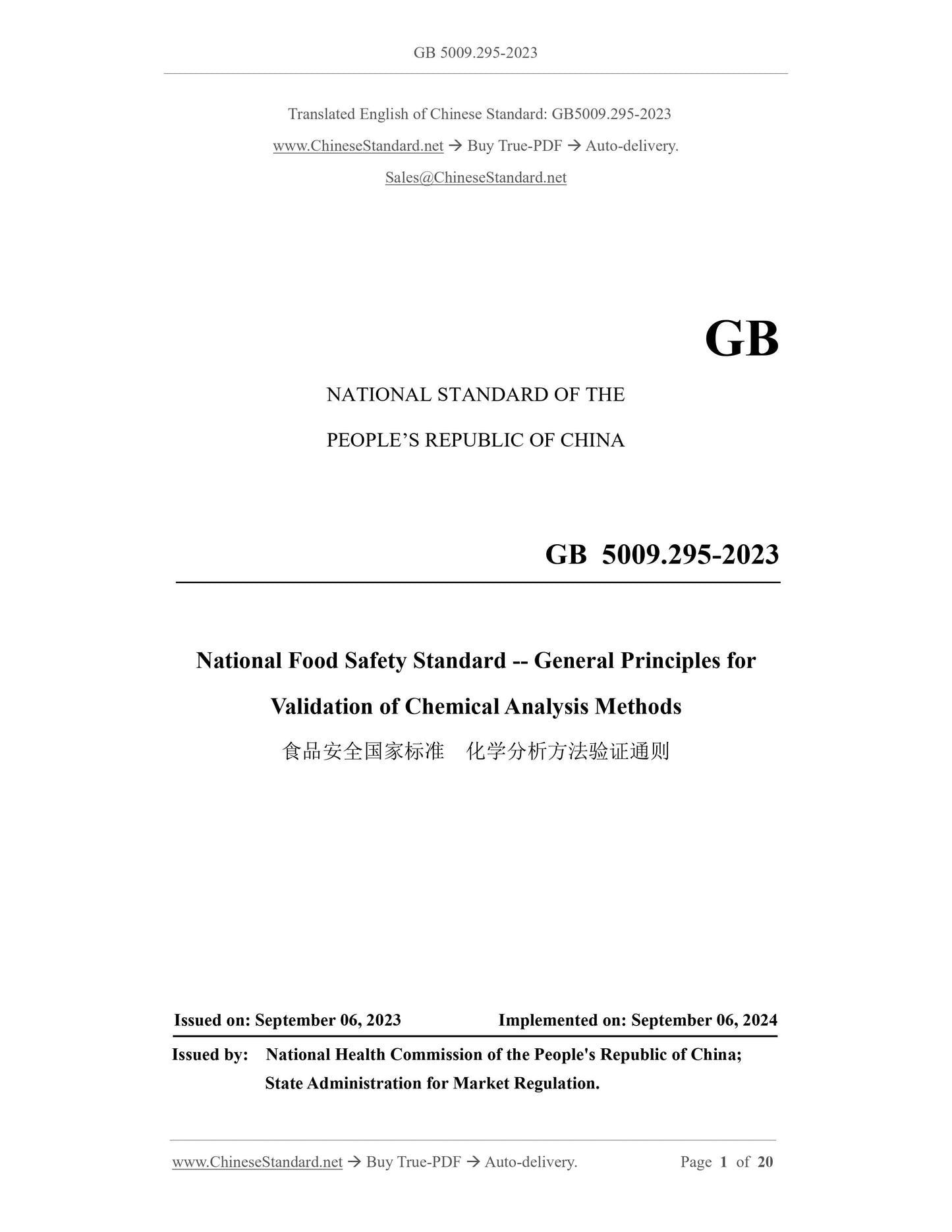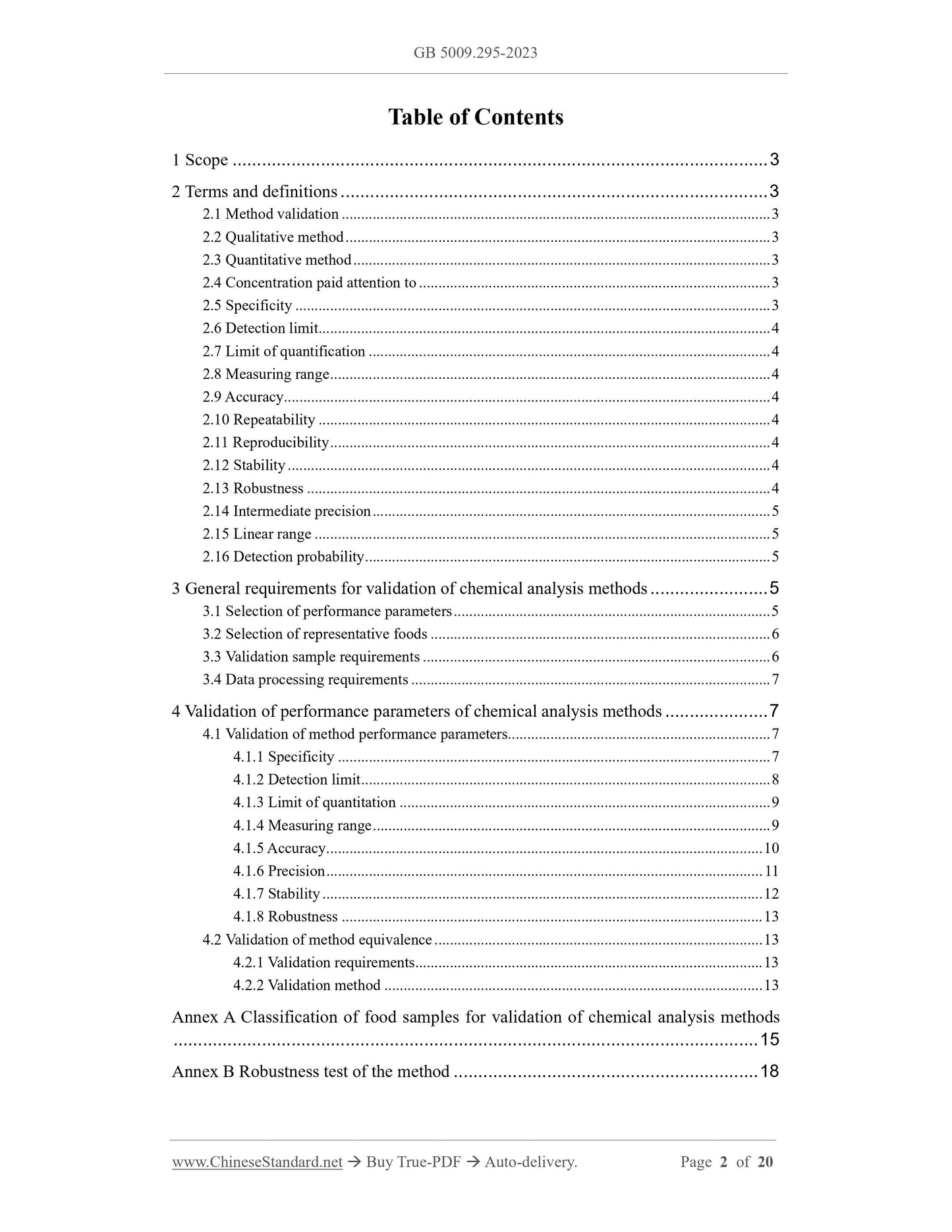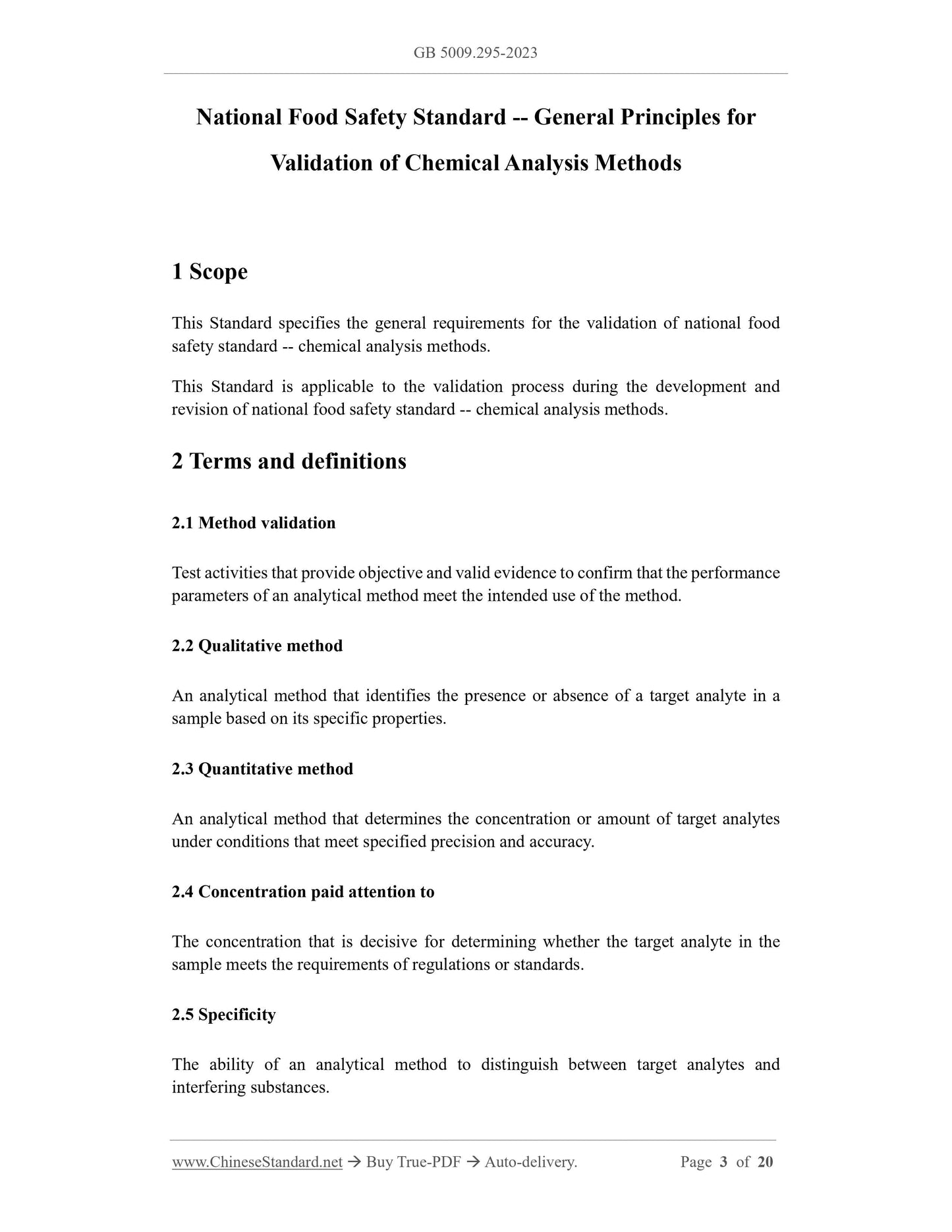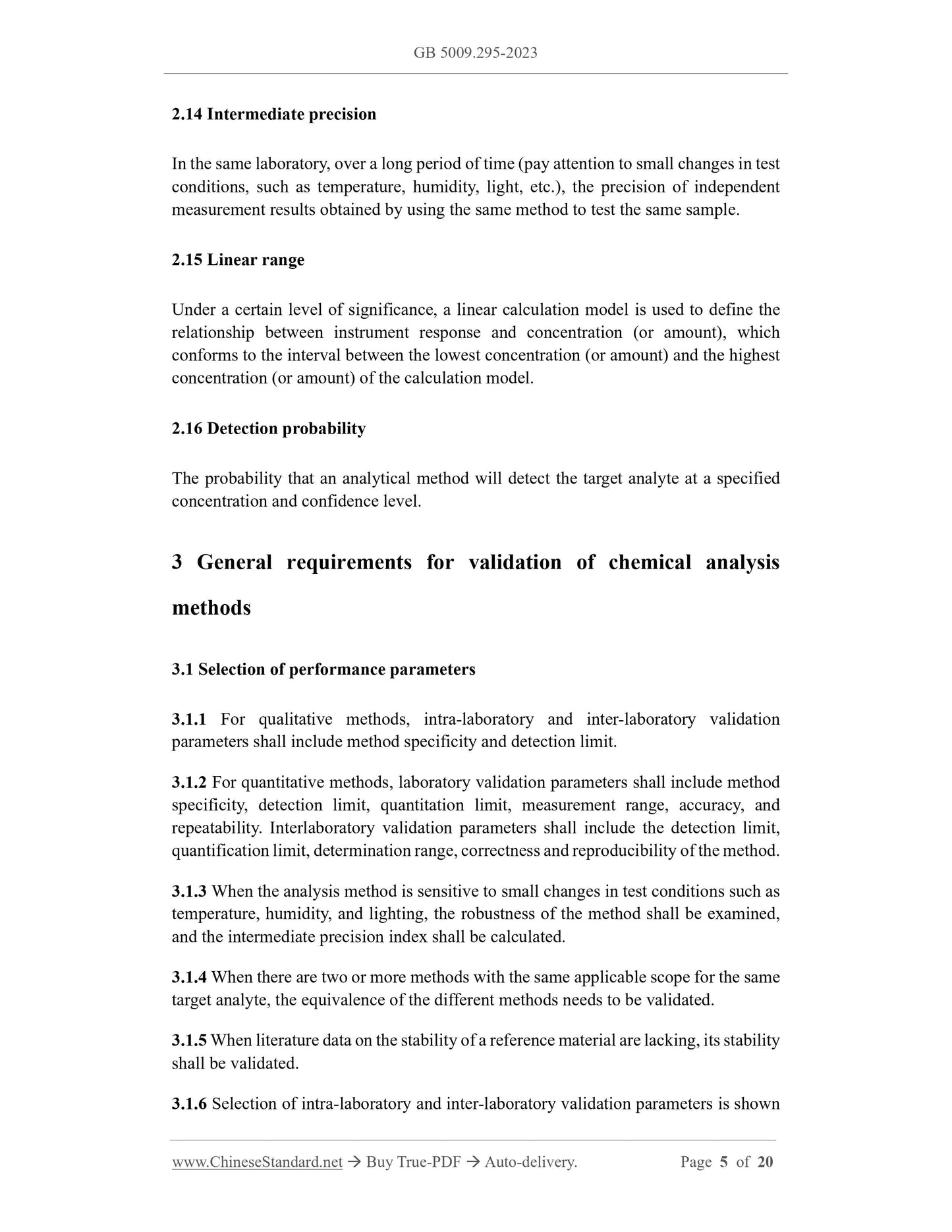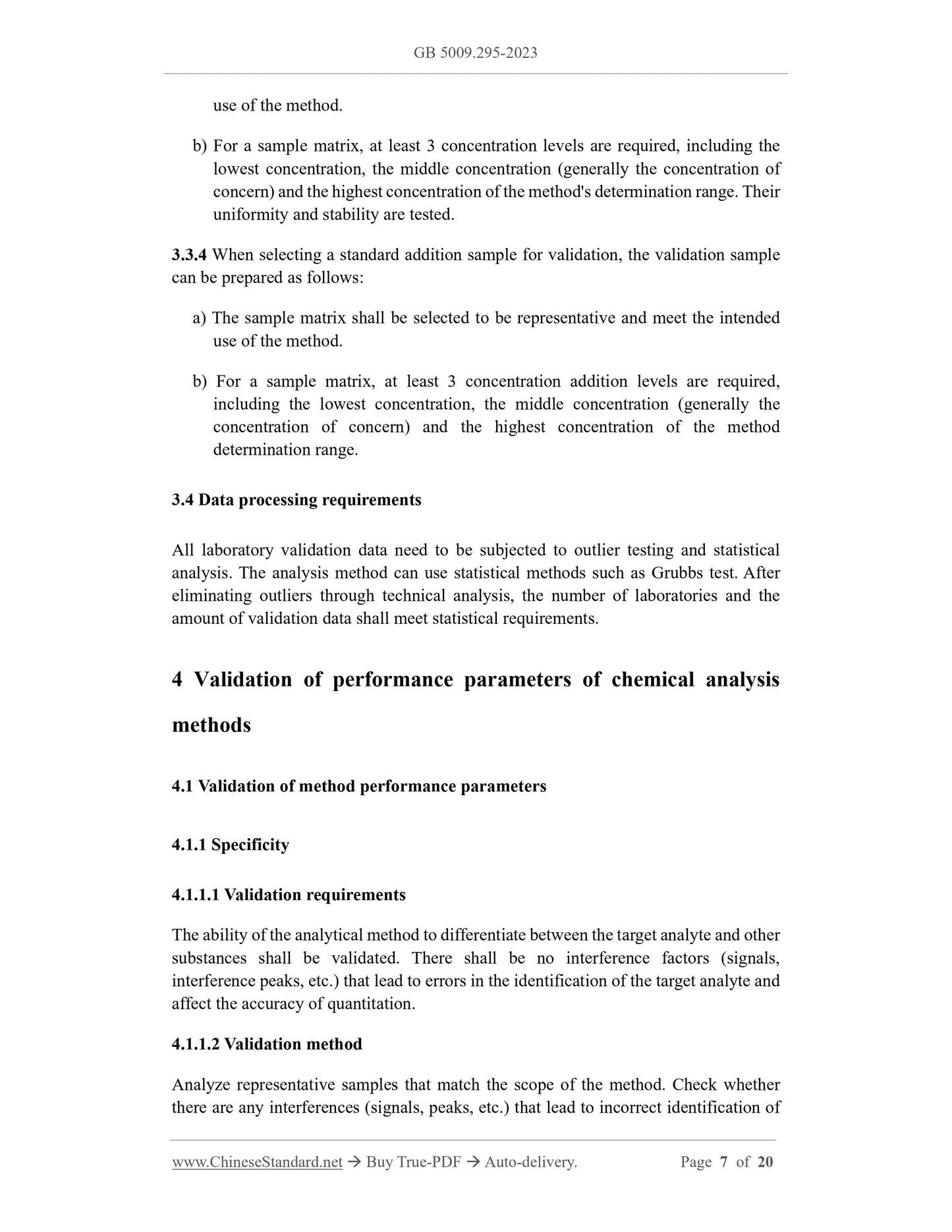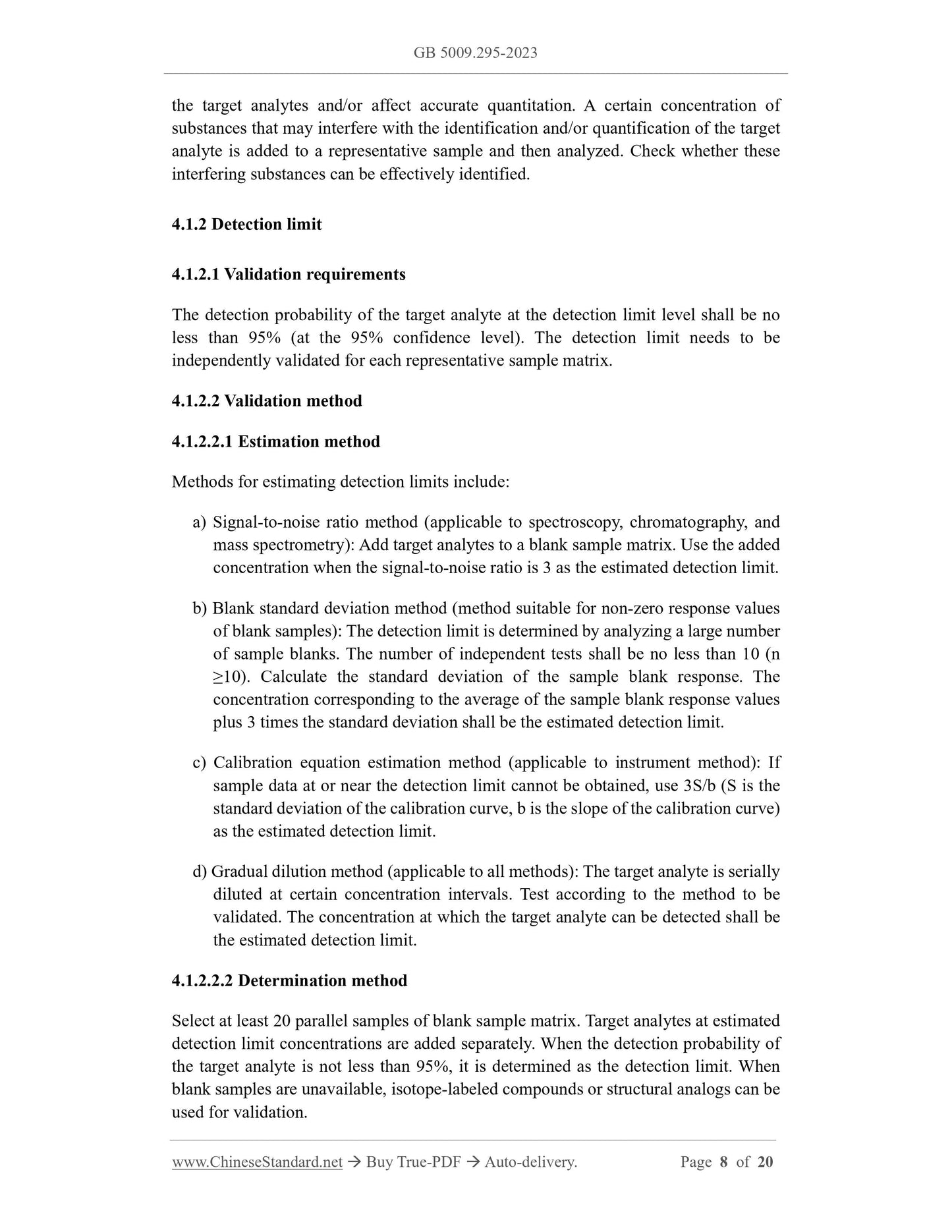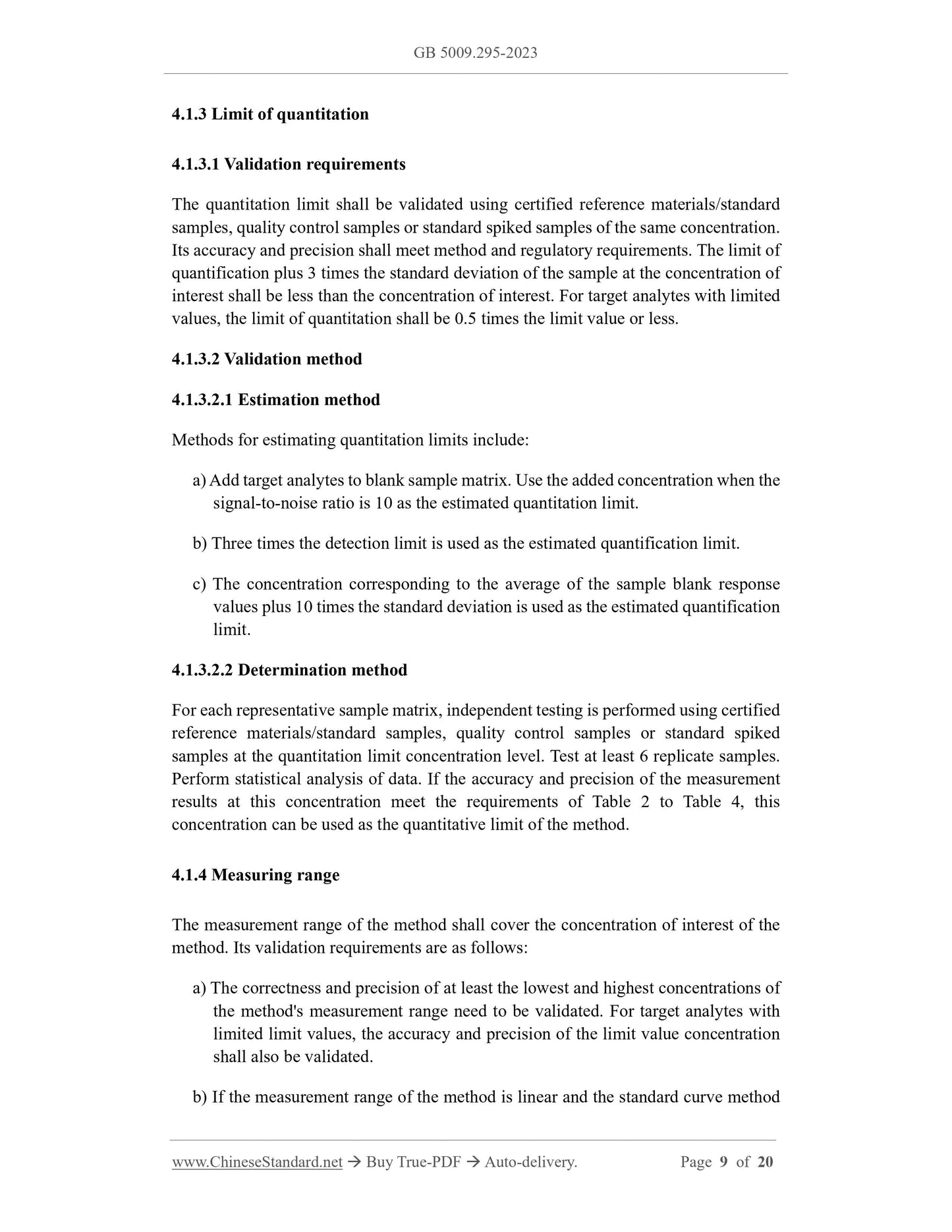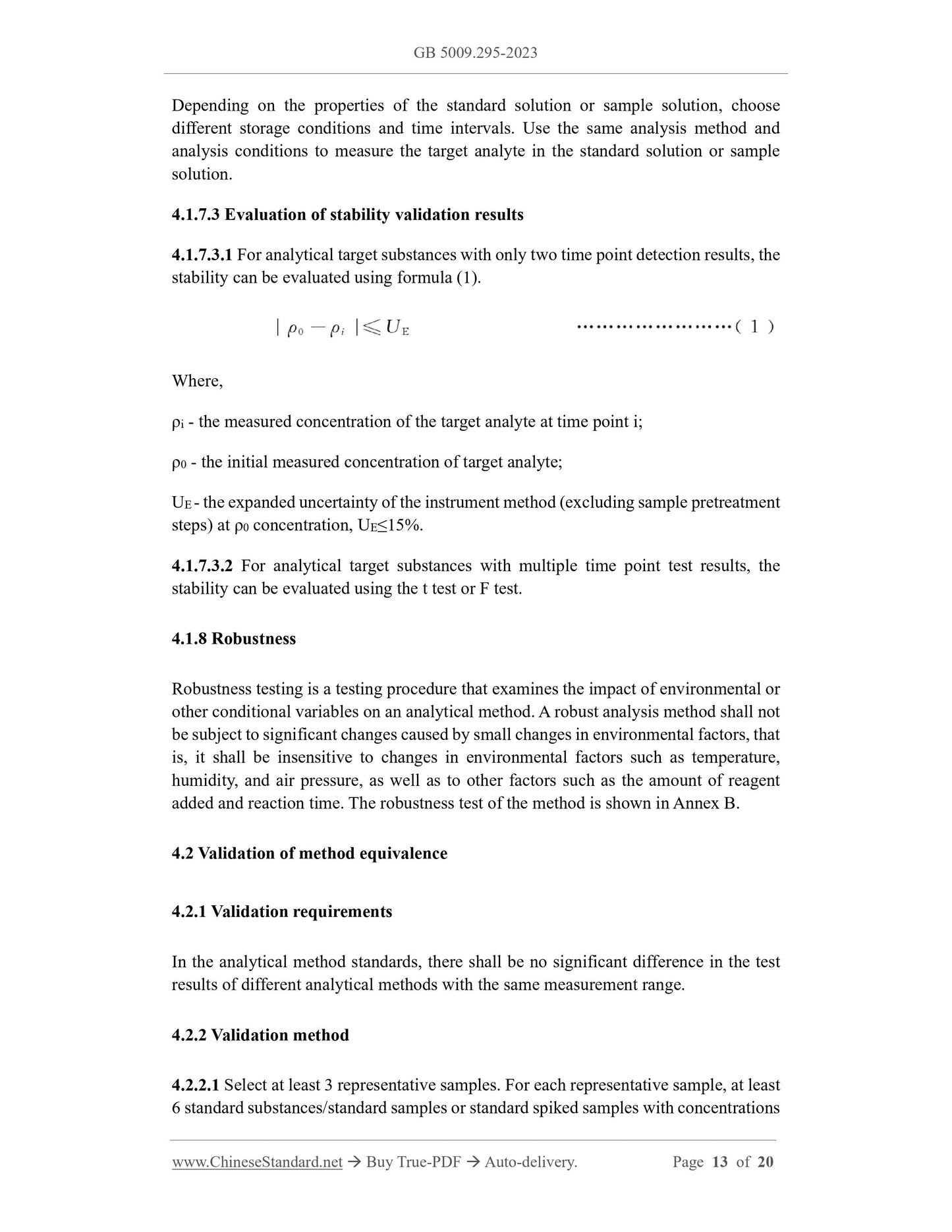1
/
of
8
www.ChineseStandard.us -- Field Test Asia Pte. Ltd.
GB 5009.295-2023 English PDF
GB 5009.295-2023 English PDF
Regular price
$260.00
Regular price
Sale price
$260.00
Unit price
/
per
Shipping calculated at checkout.
Couldn't load pickup availability
GB 5009.295-2023: National food safety standard - General rules for verification of chemical analysis methods
Delivery: 9 seconds. Download (and Email) true-PDF + Invoice.Get Quotation: Click GB 5009.295-2023 (Self-service in 1-minute)
Newer / historical versions: GB 5009.295-2023
Preview True-PDF
Scope
This Standard specifies the general requirements for the validation of national foodsafety standard -- chemical analysis methods.
This Standard is applicable to the validation process during the development and
revision of national food safety standard -- chemical analysis methods.
Basic Data
| Standard ID | GB 5009.295-2023 (GB5009.295-2023) |
| Description (Translated English) | (National food safety standards Determination of ethanol concentration in wine and edible alcohol) |
| Sector / Industry | National Standard |
| Classification of Chinese Standard | X09 |
| Word Count Estimation | 186,177 |
| Date of Issue | 2023-09-06 |
| Date of Implementation | 2024-03-06 |
| Issuing agency(ies) | National Health Commission of the People's Republic of China, State Administration for Market Regulation |
| Summary | This standard specifies the method for determination of ethanol concentration (alcohol content) in wine and edible alcohol. The first method density bottle method is suitable for the determination of ethanol concentration (alcohol content) in wine and edible alcohol. The second alcohol meter method is suitable for the determination of ethanol concentration (alcohol content) in wine (except beer) and edible alcohol. The third method gas chromatography is suitable for the determination of ethanol concentration (alcohol content) in beer, wine and fruit wine. The fourth method, the U-shaped oscillating tube digital density meter method, is suitable for the determination of ethanol concentration (alcohol content) in wine and edible alcohol. |
Share
